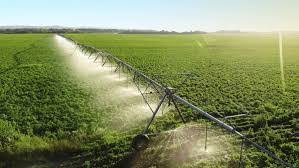Tropical Africa lies south of the Sahara Desert. It extends over the entire equatorial belt of Africa and latitudinally to about 20°N and 26°S, exhibiting great diversity in relief, climate, vegetation, and crops grown.
The diversity in the number of crops grown and variations in cropping and farming systems is attributed to the multiple racial backgrounds and linguistic groupings, differences in cultural, economic, colonial, and political backgrounds and experiences, the level of technological development, and resource availability.
These factors have significant implications for the characteristic features of tropical agriculture. The characteristics of tropical agriculture are strongly influenced by the prevailing customs and the needs of the farmer.
Read Also: 5 Amazing Health Benefits of Triphala (Three fruits)
General Characteristics of Tropical Cropping Systems

- There is a diversity of farming systems, ranging from “true” shifting cultivation, where the settlement is moved, to permanent cultivation.
- True shifting cultivation is rare and restricted to certain areas.
- Permanent cultivation occurs in compound farms, kitchen or homestead gardens, some soils of high fertility, confined sites, and overcrowded areas of high population densities.
- The compound farm system is the most widespread permanent cropping or farming system and often forms the nucleus of other field systems.
- Semi-permanent long and short bush or planted fallow systems vary in cultivation period relative to the length of fallow.
- The most important staples and cash crops are usually grown in the first year following the clearance of forest, natural bush, planted fallow, or grassland.
- Intercropping is widespread with the highest complexity in compound gardens, especially in the rainforest where annual staples, vegetables, and perennial fruit trees are intercropped.
- Mixed intercropping and relay intercropping are more common than sequential cropping monocultures.
- Classical crop rotations involving sequences of crops grown in monoculture are rare in traditional farming systems.
- Farm sizes are usually small, ranging from less than 1 hectare up to 5 hectares.
- Cash or export crops are more likely to be grown as sole crops or in association with fewer crops than non-cash staples.
- Farming involves simple tools and much human labour.
- The most widespread land-clearing systems involve the use of fire.
- Most cropping systems rely on rainfall except in some locations in semi-arid and arid areas where irrigation is practised. The uncertainties in rainfall distribution and intensity determine the variations in cropping patterns and mixtures.
Read Also: How Guava Fruits and Leaves Improve Female Fertility
Factors Causing Variations in Tropical Cropping Systems

- The introduction of Asian crops such as taro, water yam, bananas, and rice, and American crops such as maize, cassava, and sweet potatoes.
- Population growth, which followed the introduction of Asian and American crops.
- The development of markets for perennial crops.
- Expansion of cassava production due to its adaptation to shorter periods of fallow, leading to lower soil fertility and demands for cheaper staple foods in urban centres.
- Development of commercial production of food crops and market gardening, especially close to urban centres.
- Development of railways, road systems, and markets, leading to the growth of settlements and farms along roads and railways and close to markets.
- Increased fruit and vegetable production for sale and support of local canning industries.
This article has outlined the general characteristics and factors that cause variations in tropical cropping systems, reflecting the unique agricultural practices across Tropical Africa.
Do you have any questions, suggestions, or contributions? If so, please feel free to use the comment box below to share your thoughts. We also encourage you to kindly share this information with others who might benefit from it. Since we can’t reach everyone at once, we truly appreciate your help in spreading the word. Thank you so much for your support and for sharing!
Frequently Asked Questions
We will update this section soon.

